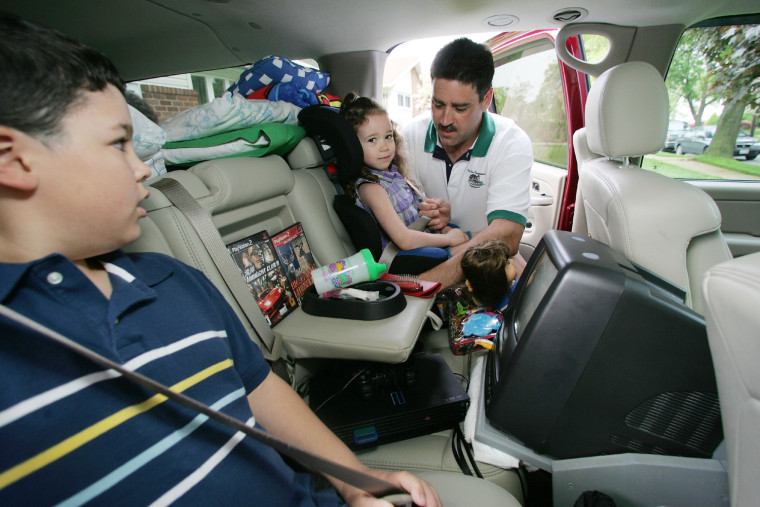Although family vacations are supposed to be fun, all too often the family arrives at its destination in anything but a good mood. Mom and Dad have frazzled nerves, the children are cranky and crying and tempers all around are at the boiling point.
Traveling with your children, however, doesn't have to be a traumatic experience. Believe it or not, it is possible to take a vacation trip where everyone has a good time getting there. All you have to do experience this automotive nirvana is to keep the children's comfort, amusement and safety in mind as you make your travel plans. Here are a few tips that should make your car vacation a lot more enjoyable for the whole family.
Safety first
Whether you are taking a trip to the nearest state park or making a cross-country journey, the safety of the driver and passengers should always be your number one consideration. Before starting out on your trip, have your mechanic give your vehicle the once-over to make sure it is in tip-top condition. Make sure the exhaust system doesn't leak, that the tires and brakes are in good condition and all exterior lights are functioning properly.
Next, make sure you have the proper seating accommodation for all family members. While adults and teens can simply sit down and fasten their seatbelts, smaller children will need a child safety seat or a booster seat, depending upon their age. Also, make sure that everyone wears a seatbelt at all times.
One of the problems with traveling with smaller children is that they will fiddle with the door and window controls. Most 4-door sedans, wagons, and minivans have childproof locks built into the rear door edges. Once activated, the passenger doors can only be opened from the outside. On vehicles not so equipped, you can secure the doors by having lever-type handles and window cranks removed and the protruding shaft capped. Electrically operated locks and windows can almost always be locked at the master control switch.
Bulky, heavy and sharp items should be stored in the luggage compartment, not in the seating area. If you own a wagon, minivan, SUV or hatchback, the luggage area is open to the passenger compartment so use a safety grate or restraining net to keep luggage from flying forward during sudden stops. In sedans, don't put objects on the shelf behind the rear seat; they block the driver's vision and become deadly missiles during emergency stops.
Keeping it calm
The reason so many car trips become traveling drama shows is that children get easily bored. It may be great for Mom and Dad to look at the scenery as they drive, but kids need to be constantly occupied. Bored children are cranky children.
Have each child bring along a small bag or pack stuffed with his or her important items, such as books, magazines, tapes, CDs, stuffed toys. The bag has to be small enough so it can be stored on the floor, in front of their feet. Make it a rule that nothing sharp goes in the bag — not even pencils — and when the kids aren't looking tuck in a surprise, such as a special snack or new CD.
While younger children can be easily entertained with books, stories, songs and license plate bingo, teens aren't so easily pleased. Teens like living in their own world so encourage them to bring along a CD, DVD, MP3 player or Game Boy.
Not matter how you plan the in-car amusements, sooner or later they will lose their magic. When you notice the children are fidgeting, grumpy or asking "Are we there yet?" it is time to take a break.
Auto experts agree that it is a good idea to pull over every couple of hours for a 15-to-20-minute safety break. These stops are also important for the kids, allowing them time to go to the bathroom, stretch their legs and burn off excess energy. Bring along a Frisbee or similar toy for a little family interaction at the rest stop. Getting a break from the car and having a little fun will mean that everyone will be in a better frame of mind when it is time to get back in the vehicle.
Apart from stopping for meals, gas, and safety breaks, structure your travel time so you can stop along the way to visit a local point of interest. Let the kids have some input here, so they feel included in the decision-making process.
After every stop, no matter how short, do a head count. Make sure everyone is present and accounted for before you start the engine. In addition, make sure everyone knows where he or she is going and the telephone number of the place you are staying. Pin this information inside the jacket or shirt of smaller children. If you do misplace a child (believe it or not, it happens), call the police and immediately return to where you last remember seeing the child.
Peter duPre is an automotive writer based in Poulsbo, Wash.
